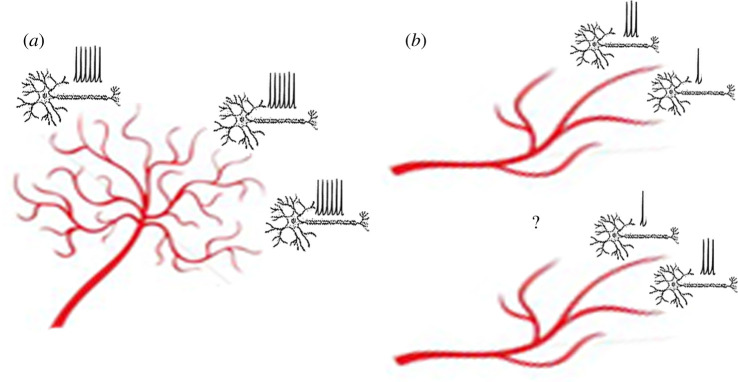Figure 1.
How the vasculature affects BOLD-neural correlations. Two examples of how the vasculature puts important constraints on how precisely one can relate neural activity to BOLD signal changes. (a) A dense capillary network as one might find in primary sensory cortices. A small ensemble of neurons (each shown as a single neuron) can trigger separate increases in blood flow, allowing discrimination of the activity of individual neurons. (b) A sparse capillary network, such as might be found in the hippocampus, places significant constraints on how precisely one can measure the activity of small ensembles of neurons. As shown here, it is not possible to distinguish different levels activity from two neighbouring ensembles that both trigger blood flow changes from the same capillaries/arterioles. (Online version in colour.)

